Last year’s stacked lineup of games for the Game Awards had us thinking: What was the best year in gaming? As part of our series on determining gaming’s best year, we’re putting together an article on each year, charting the major releases and developments of the year, and talking about both their impact and what made them great.

The Year: 2018
Coming fresh off of a year that included the release of the Nintendo Switch, the birth of the Battle Royale genre as we now know it with PUBG, and the revitalization of Warhammer: 40,000 with the release of 8th Edition, it’s easy to be skeptical of whether 2018 is even worth talking about. And while it’s true that 2018 in gaming may not have as many flashy releases as some others, that doesn’t mean there’s nothing worth talking about here: the year’s video game release schedule includes a murderer’s row of incredible games, several of which are still nearly as popular six years on. And on the tabletop front, you’ll find one of the better-received Magic sets in recent years, one of the tightest asymmetric board games you’re likely to find, and the redemption story none of us knew we wanted for Games Workshop’s ill-received fantasy wargame.

Nintendo Labo
If you thought the Nintendo Switch’s gimmick was fairly tame compared to some of the stuff they’d gotten up to with the Wii or 3DS, apparently you’re in good company: The company released a series of cardboard craftable peripherals in the Nintendo Labo series. The series consists of two “kits,” each including cardboard peripherals that players are intended to build to play with games specifically made for them. The “Toy-Cons” you’d build from these were honestly pretty cool, including a fishing rod complete with reel, a miniature piano you could actually play, and a set of motorcycle handlebars that you could even use with Mario Kart. Even more ambitious was the “Robot Kit,” where you built a backpack that would use your Switch’s Joy-Cons to track your movement, then translate that into a robot that could stomp around.
Unfortunately, Labo wasn’t much more than a couple of cool toys that had some neat tricks in them. Even the motorcycle toy, the closest the concept got to something most players would use, was kind of a pain compared to use compared to just picking up a controller. But the things worked, and if nothing else they showed that Nintendo’s dedication to doing weird shit with their consoles was alive and well.
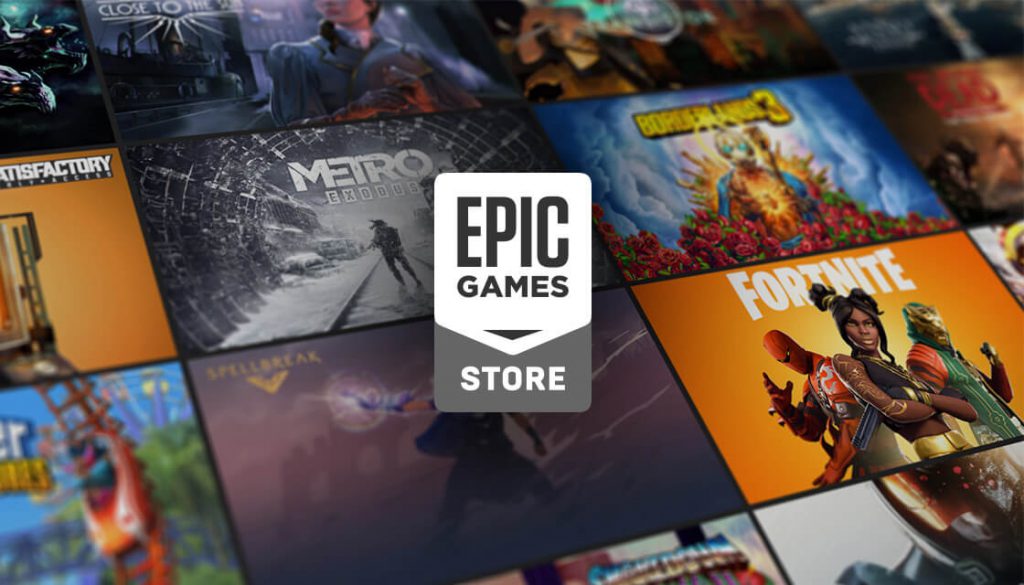
Epic Games Store
Many companies have tried to compete with Valve’s utter domination of the PC gaming market, but none of them have gotten quite as big as the Epic Games Store. It never quite hit the same heights as Steam (or at least hasn’t yet as of this writing), but has managed to secure a handful of exclusives over the years, making it a real competitor, even if it’s in no danger of dethroning the clear leader.
But the enduring legacy of the EGS likely won’t be felt in PC gaming, but mobile gaming instead. Starting in 2020, Epic initiated a series of lawsuits against Apple and Google, alleging that the companies used the App Store and Google Play Store respectively to exert monopoly power over gaming markets on their platforms to the detriment of the consumer. The cases in the US were a mixed bag for them, and there are at least a handful of cases elsewhere in the world that are still going. But however they shake out, we’ll be feeling the impact for some time.
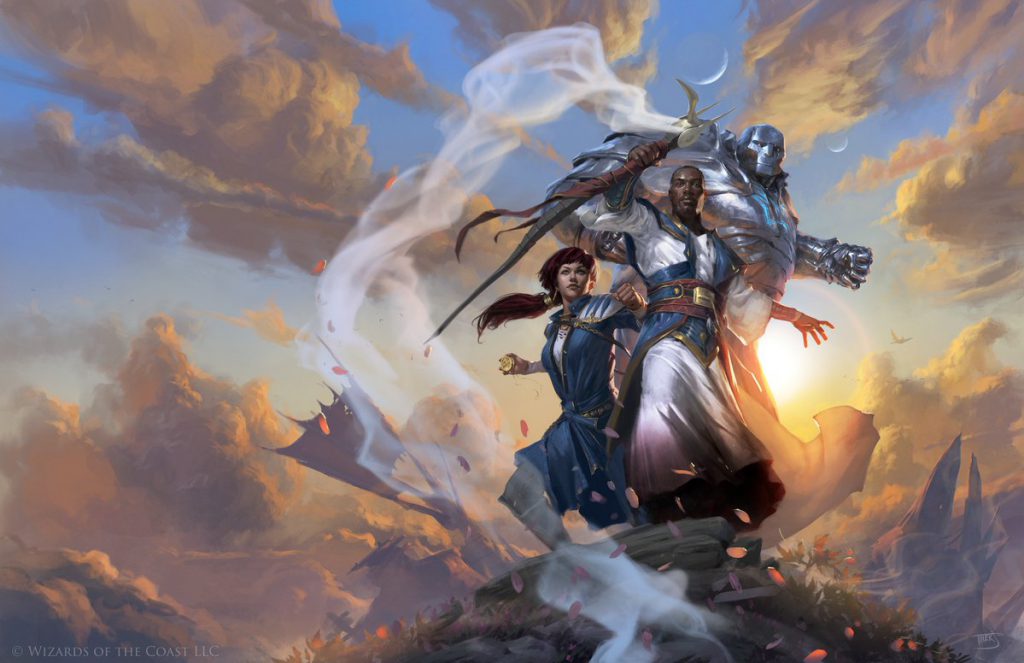
Dominaria
TheChirurgeon: For a game about powerful wizards named planeswalkers able to travel a multiverse of different planes, Wizards of the Coast spent the game’s first ten years almost exclusively focused on a single plane, telling stories about Dominaria across multiple continents – with a couple of side stories here and there for the likes of Homelands and Mercadian Masques. 2003’s Mirrodin would break that trend, and from there we’d travel to Kamigawa, Ravnica, back to Dominaria briefly for the Time Spiral block, and then we’d hit Alara, Zendikar, Theros, Innistrad, Tarkir, Kaladesh, Amonkhet, and Ixalan before finally returning to Magic’s “home” plane in April 2018, in time for the game’s 25th anniversary.
As a set, Dominaria was heavily anticipated and absolutely delivered on a number of levels. From a card perspective, the set had some great cards and was extremely fun to draft, incorporating tons of older references without alienating newer players. The set introduced Sagas, one of the game’s more popular mechanics, as well as the concepts of Historic cards and Legendary Sorceries. On the story side, Dominaria came on the heels of the stellar story Alison Luhrs and Kelly Digges put together for Ixalan, helping build toward the climax of a story involving Nicol Bolas that first began in Shards of Alara ten years prior.
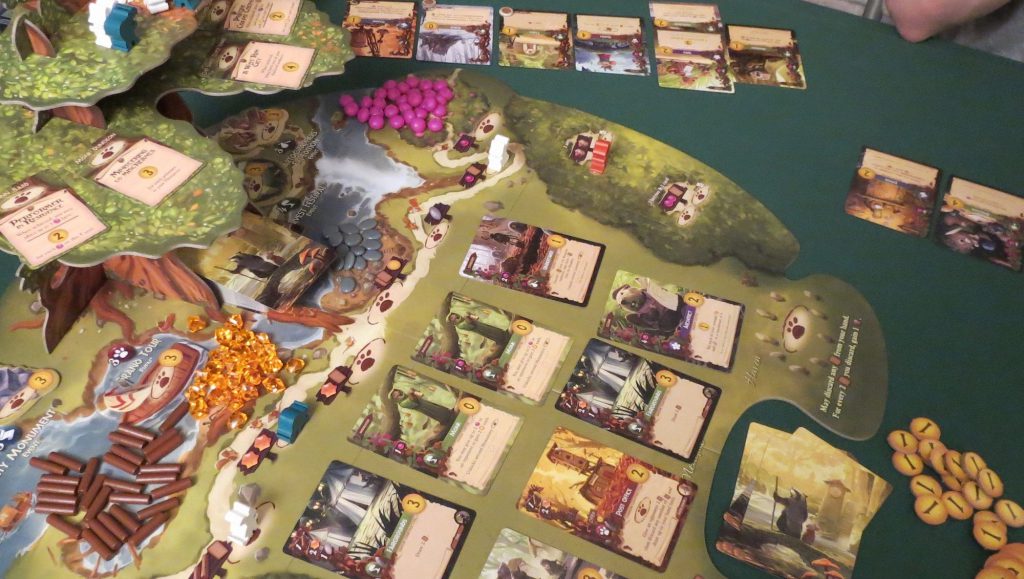
Everdell
TheChirurgeon: One of 2018’s best board games, Everdell is a game about collecting resources using an army of adorable forest critters wearing little hats and clothing. Each turn players pace workers, play cards to build and populate the city, and then gather supplies to prepare for the winter. It’s a relentlessly charming game and it won a ton of awards.
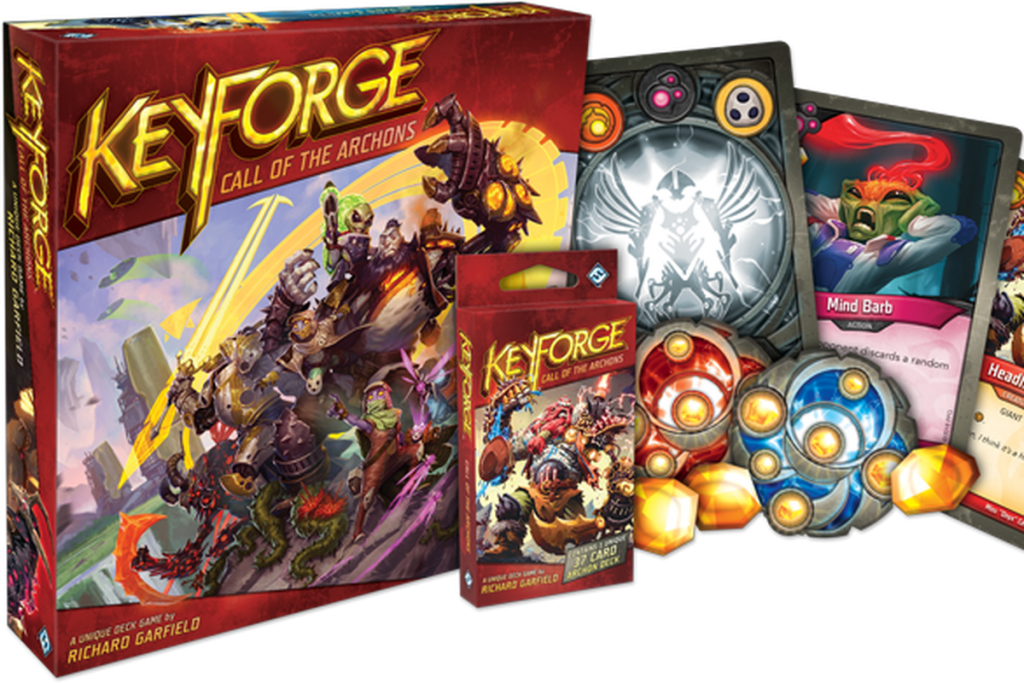
KeyForge
When Richard Garfield announced that he was going to be making a new collectible card game, a lot of people had a lot of expectations for what it would look like. And to an extent, it came through. The objective of the game is different; rather than attacking your opponent directly, you’re trying to forge the titular “keys” by gathering and spending “Æmber.” To do that, you’ll use the various cards in your deck to summon creatures, cast spells, and generally do the sorts of things you’ve come to expect from a game of Wizard Poker.
From there, things get a bit weird. The most obvious thing that sets it apart from other card games is also one of the most fundamental: rather than buying cards in booster packs (as in Magic) or curated expansion packs (as with Fantasy Flight’s LCG model), you instead buy entire 36-card deck with a fixed list. Once you’ve got the deck, you don’t change it. Formats for organized play vary from “show up, buy a completely new deck, and see how well you can do,” to “bring a selection of your favorite decks, then try to get them favorable matchups based on what your opponent has.”

Just One
Looking for something a bit lighter? Or trying to entertain an entire group of people at the same time? Look no further than Just One, a delightfully simple party game that’s quickly found a spot as a staple in many gaming households.
The setup is simple: one player draws a card without looking at it, then picks a number from 1 through 5. That number corresponds to a word, and now everyone else has to work together to help them guess it. You’ll do this by writing a word–Just One, though–on a piece of plastic with a dry erase marker. Help your team get enough of them right without guessing wrong too many times, and you win.
But here’s the trick: that clue you wrote? Guess how many times each clue can be shown to the person in the hot seat? That’s right: Just One. If any clue has been used more than once (or if two clues are so similar that they might as well be the same clue), they’re both discarded, and the player guessing doesn’t get to see them at all.
Finding the perfect clue in Just One is walking a tightrope: it has to be obvious enough that the person you’re showing it to will see it and follow where you’re leading them, but not so obvious that anyone else will write it down as well. And, paradoxically, this frequently leads to three or four players at the table all smugly convinced they’ve finally had the chance to show of their marvelously large brain, only to find that they were actually sharing a single misfiring neuron with half of the rest of the table.
It’s fun, it’s simple, and it’s quick: what’s not to love?
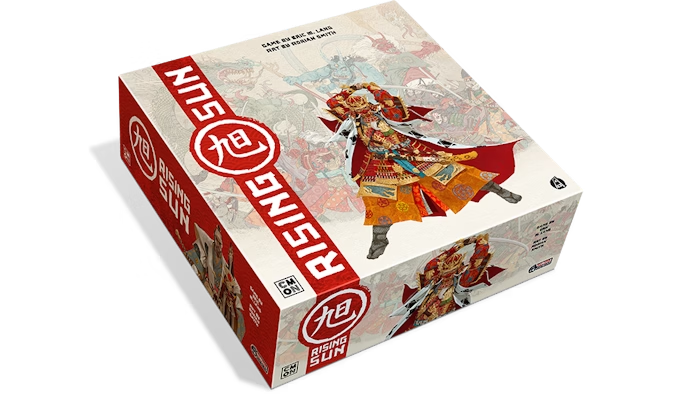
Rising Sun
If you’ve been in the board game hobby for any length of time, chances are you’ve heard of Eric Lang. He’s an incredible designer, and the list of absolute bangers he’s put out includes hits like Marvel United, XCOM: the Board Game, and Chaos in the Old World (you can find our review of that one here). He’s also tried his hand at miniatures gaming, having a hand in the excellent A Song of Ice and Fire miniatures game.
Rising Sun was a CMON Kickstarter game that initially delivered to backers in 2018, so we’ll count it here. It’s got all the trappings you’d expect from Lang’s work during that era: asymmetric factions, plenty of opportunity for political intrigue, and theming that runs so deep you’ll find yourself wanting to make suboptimal plays because they “feel” more in keeping with your faction. It followed up 2015’s Blood Rage, and the action has moved from Norse mythology to a mythologized feudal Japan, and everything in the game is written with the theme in mind. Rather than the Norse gods, there are rules for various Kami, and the monsters are (mostly) inspired by Japanese myth, complete with detailed miniatures. Even the gameplay is dripping with theme: each round starts with the “Tea Ceremony,” which is an entire phase devoted to negotiating alliances for the coming round, and any given round will see fair deals, unfair deals, and outright bribes. From there, the players move their forces around the board and take other actions to best position themselves for the upcoming War Phase. And through it all, there’s the constant threat of betrayal. It’s tense, but can be a lot of fun if you’ve got the right group.
The game’s solid, but it’s probably not Lang’s best work: Chaos or Blood Rage are likely better choices if you want this sort of experience. Unfortunately, it’s most famous as a cautionary tale about the dangers of relying on Wikipedia at your day job. As part of the Kickstarter campaign for the game, CMON came up with a slew of stretch goals and other incentives to try to induce potential customers to buy in. One of the monsters they offered as a Kickstarter exclusive, the “Kotahi,” turned out not to be a “Legendary Japanese Monster” at all, but was instead a New Zealand farmer whose friends vandalized the Wikipedia page as a goof. Always check your sources, kids.

Root
Rising Sun wasn’t the best asymmetric board game about war in a fantastical setting released in 2018, though: that title has to go to Cole Wehrle’s Root. The game puts players in charge of one of various factions struggling for control of a fantastical woodland and dominion over the creatures that live in it. Each player plays one of four factions, and each faction has a totally unique way of playing the game: the Marquise de Cat plays a fairly straightforward area-control and resource-management game, while the Woodland Alliance fights a guerilla war and can paradoxically be more threatening the fewer soldiers they have on the board. And if you’re only feeling like dealing with a single piece, look no further than the Vagabond, who wanders around the board buying items from other players, taking on quests, and generally sticking their nose in where it doesn’t belong.
The depth that each faction offers means that playing a different one is almost like playing a different game, but playing the same one almost always comes with room for improvement. Some players will find themselves drawn to the challenge of optimizing their play of a given faction that they enjoy, while others will bounce around between different ones in search of new experiences. Both are equally valid, and it’s rare to find a game that so deftly lends itself to both playstyles. All in all, a must-play.

Star Wars: X-Wing Second Edition
When Star Wars: X-Wing released back in 2012, it quickly became a fixture at many game shops. While the Star Wars license was unquestionably the biggest draw, the ease of getting the pre-painted ships to the table combined with the relatively straightforward list-building and a slick game system offering plenty of room for daredevil dogfighting maneuvers without dragging the game out too long. By 2018, the game was starting to show its age, and the balance between the various factions was starting to buckle under the weight of 6 years of continuous releases. Enter Star Wars: X-Wing Second Edition.
Unfortunately, they didn’t really stick the landing. List-building in second edition is centered around a game-specific app, which some players found off-putting, and the balance changes made with the new edition didn’t really seem to make anyone happy. It’s not that the new edition was bad; on the contrary, it’s still quite good. But the new edition couldn’t have come at a worse time: The formerly-sleeping giant that was Games Workshop was now fully awake and well into the release schedule of 40k’s 8th edition.

Age of Sigmar Second Edition
Now, if you want to talk about a second edition release that was a success, look no further than Age of Sigmar. Let’s be honest here: First edition AoS was just plain weird. No points, weird rules that had you doing goofy shit at the table, and an all-around vibe that felt like the “games” your high school biology teacher would have the class play when she wanted to duck out the back for a quick smoke. And while the General’s Handbook in 2017 added points and battleplans, and subsequent battletomes expanded on rules for those armies, there was still room for improvement.
Age of Sigmar’s second edition wasn’t just an improvement: It finally brought Age of Sigmar into its own as a real, honest-to-god wargame. The second edition rulebook (now significantly more than 4 pages) codified the changes in the 2017 General’s Handbook, and added command points, Endless Spells, and standardized base sizes, as well as making changes like preventing units from shooting out of combat and offering characters protection through a “Look Out, Sir!”-like rule. It’d still be another few years until the game really hit its stride with the third edition, but if you’re looking for where the Age of Sigmar story really begins, it’s second edition.
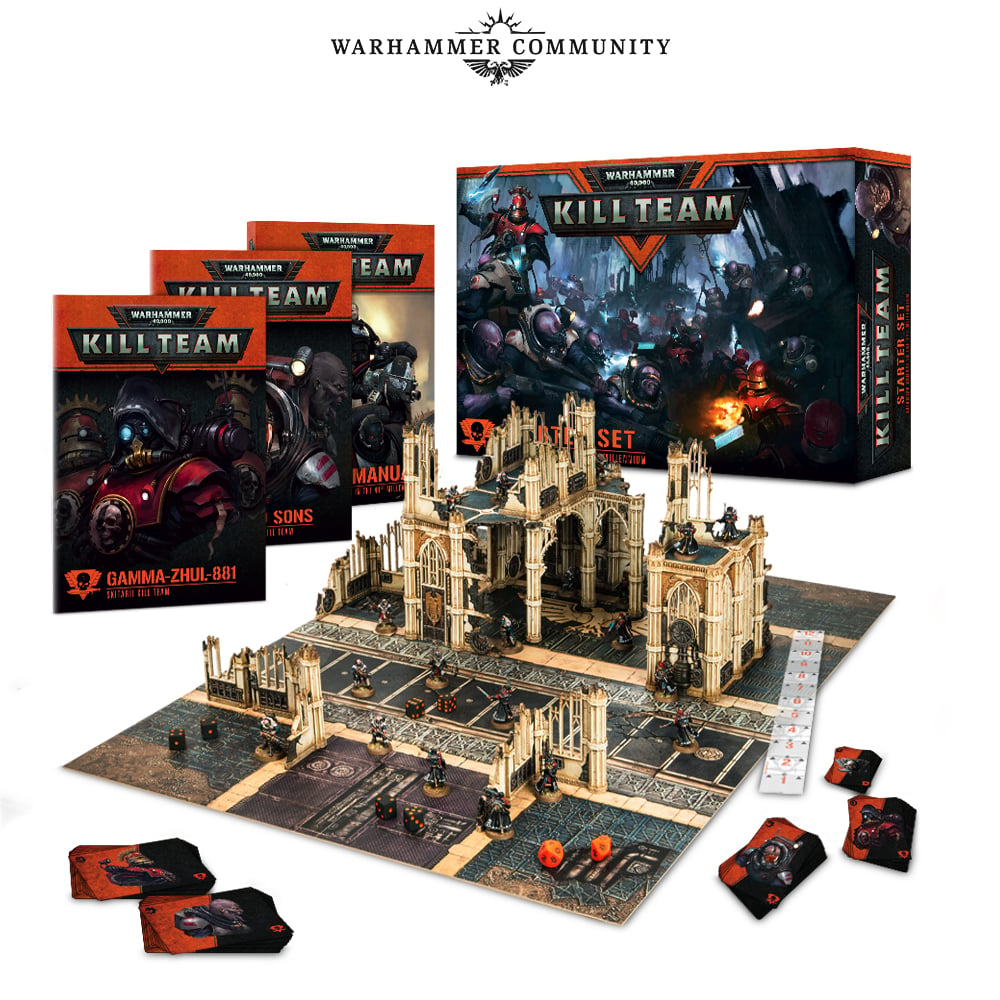
Kill Team
One of the more annoying things about 40k is how difficult it is to get into the hobby. And while eighth edition definitely streamlined a lot of the rules, there was still a huge problem with bringing new players in: just what the hell can you do with a single box of miniatures? Starting in 2018, Games Workshop had an answer: Kill Team.
Let’s be clear, though: While this game shares a name with the one you’ve probably seen being played at a shop or event near you, it has almost nothing else in common with it. Rather than the bespoke ruleset for a squad-level skirmish, 2018’s Kill Team took the 40k rules, did a quick find/replace to change “unit” to “model,” and added in a system of “injury rolls” and “flesh wounds” so that the 1- and 2-wound models running around the table wouldn’t just evaporate the first time they left cover.
As a game, it was…fine. You could play it, the rules functioned, and each faction had a solid variety of models to draw from that made it easy for anyone to field a kill team from their existing collection, even if they were just getting started. But the experience often wound up feeling flat, and it was all too common to let loose with a lascannon or melta gun or some other horrendously powerful weapon, roll a 1 on the injury roll, and watch the poor guardsman you just tried to murder scamper away into cover. All in all, its best feature was that it provided an easy way for new players to put their models on the table when they didn’t have a full army built. A decent first effort, but no one was surprised when GW just memory-holed this game in 2021 and didn’t even offer it the dignity of calling its successor “Second Edition.”
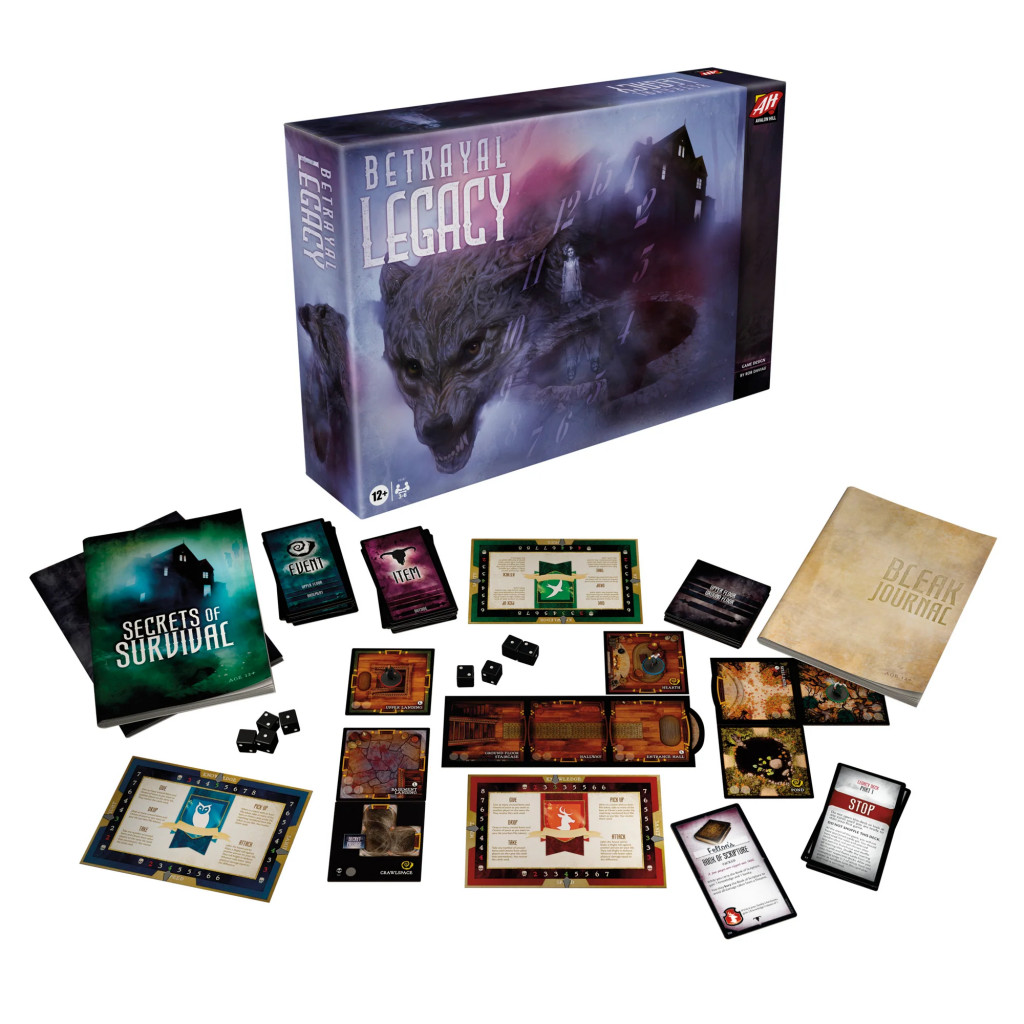
Betrayal: Legacy
TheChirurgeon: Betrayal at the House on the Hill was an obvious candidate for the Legacy board game genre – the game’s twist-heavy storytelling elements and exploration lend themselves well to the kind of multi-game storytelling devices a Legacy game can offer and the idea of past haunts coming back to haunt you is a solid one. Betrayal: Legacy offers a solid take on the Legacy format and comes with the added flavor of seeing the old trope of the haunted house being explored by stupid kids from every decade brought to life. It’s a fun way to play Betrayal which adds extra weight to the games and has a few really cool twists of its own. Also, Betrayal: Legacy is just a stronger game design-wise than its predecessor, cleaning up some of the weaker aspects of that game.
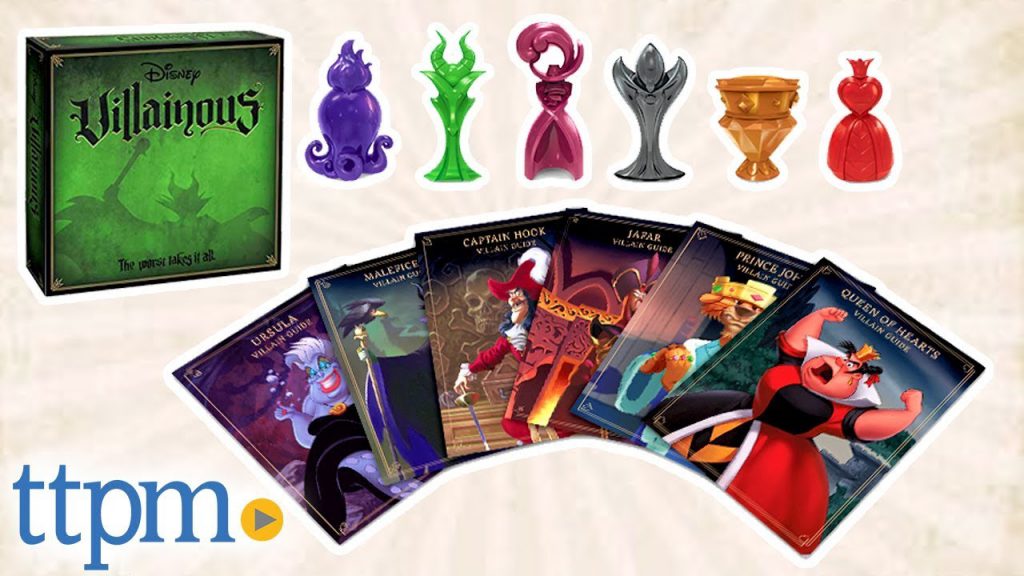
Disney Villainous
Rounding out the year’s tabletop offerings is Disney: Villainous, which is a compelling dark horse candidate when looking at the best tabletop games that year. It feels weird to say that, though: “licensed” and “outstanding” aren’t typically adjectives that get used to describe the same board game. Often, designers make tradeoffs to keep the “feel” of the licensed property that don’t necessarily help the game from a play standpoint.
Villainous manages to sidestep that problem by not having to play in any one particular sandbox. Instead, each player is a villain from a different Disney movie, like Captain Hook, Jafar, Maleficent, or Ursula, and sets out to be the most diabolical perpetrator of evil at the table by playing through their chosen villain’s schemes. Each villain has their own set of components and a completely different approach to the game. If you’re looking for an approachable game that still has some serious depth to it, you could do worse.
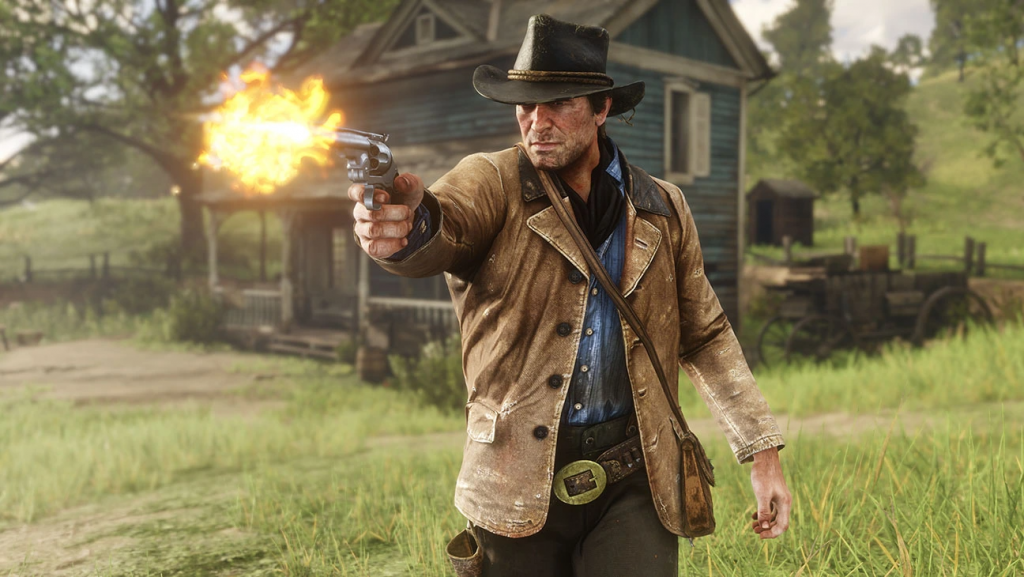
Red Dead Redemption 2
TheChirurgeon: Rockstar’s follow-up to their 2010 western was also one of the most expensive video games ever made and, like with its predecessor, it shows. This time around you play as outlaw Arthur Morgan working with his gang to try and hit one last big score so they can all become honest men and retire. It’s an incredible game with a story that goes extremely hard at parts and keeps you guessing to the end. The game serves as an effective prequel to Red Dead Redemption and has some of the most incredible set pieces in gaming. Plus, you get to kill a lot of Pinkertons and that’s good enough to put any title in contention for Game of the Year in my book.
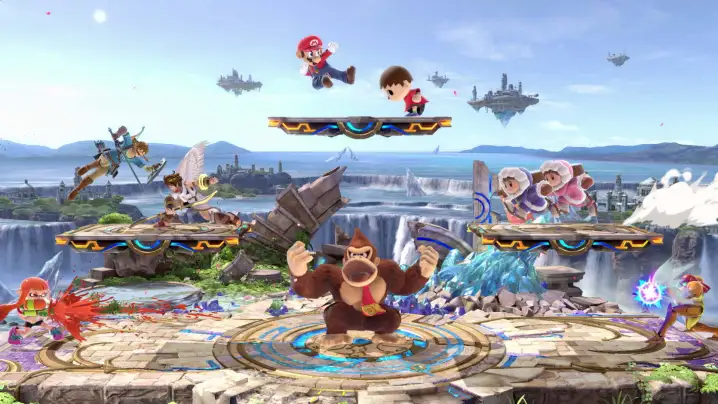
Super Smash Bros. Ultimate
A new Nintendo console released, and so everyone got down to the important stuff: demanding information about the next Smash Bros. And in December of 2018, it finally came: Super Smash Bros. Ultimate. And “Ultimate” it was: when the marketing team said “everyone is here,” they weren’t lying. The game released with a staggering 69 characters (76 if you count the “Echo” characters separately), and all the stages and items you could ever want. They even managed to bring back Sonic the Hedgehog and Solid Snake, two guest characters who hadn’t shown up since Brawl for the Wii.
And as for the gameplay, it’s still got all the hallmarks of the series, updated graphically to look better than it ever has. Add in online play and an easy-to-use stage creator, and you’ve got a solid party game suitable for all occasions. And while it may not be Melee, the game lends itself well enough to competitive play that it’s seen a thriving community spring up around it.

God of War
Nobody was surprised when a new God of War game showed up on the PS4. The series had been a staple of Sony’s consoles since 2005, and they’d all but run out of old games to remaster with the remake of God of War III back in 2015. But while Kratos’s return wasn’t a shock, I don’t think anybody could have predicted the shift in tone of the new game, let alone the shift in setting. The man who butchered his way through the Greek pantheon to godhood in his own right has settled down in Scandinavia, gotten married, and had a kid. He’s still Kratos, but rather than just being mad all the time, he’s haunted by his past and has motivations other than wanting to get revenge on everyone he’s ever met. It’s a refreshing take on an established character, and watching his quest for redemption is legitimately moving at times.
And if that didn’t sell you, there’s also a whole new pantheon of gods for him to kill.

Far Cry 5
Anybody who’s ever said that developers should keep politics out of video games obviously hasn’t played that many games, but with Far Cry 5, Ubisoft decided to swing for the fences on that front. Unlike previous entries in the series, which had you going to various exotic locales and doing the sorts of things shooters have you do in various exotic locales, it instead centered around the rise of an apocalyptic religious cult in rural America.
Keep in mind: this game released in early 2018, just over a year into the Trump administration, and a lot of people on both sides of the aisle were looking for any fight they could pick. Far Cry 5 was, somewhat predictably, chosen as a relatively minor front in that culture war, with various outlets alternately getting offended at its choice of subject matter, or solemnly intoning that someone else surely would be offended.
The game was pretty good, as far as it goes. The gameplay and exploration aspects were fine, and the story was okay. But despite the marketing, it never really wound up being the political flashpoint anyone seemed to think it was going to be. Instead, it was just another reasonably solid outing in a series of reasonably solid games. This one just happened to be set a bit closer to home.

Monster Hunter World
Monster Hunter World brought the classic Monster Hunter formula to an entirely new audience, and it did it with style. The previous mainline entry, Monster Hunter 4, was on the 3DS; Monster Hunter: Generations saw a rerelease on the Switch. World, on the other hand, was released on the PS4, and took advantage of the system’s more powerful hardware to deliver gorgeous visuals, from the landscapes and monsters all the way to stuff like the HUD and UI.
World also had a different approach to many of the series’ traditional systems. Things like skill points, which would previously be distributed piecemeal across several parts of your hunter’s kit, instead got simplified so that each piece of armor now gives you at least one rank in the skill(s) it confers. This, together with some other streamlined systems, takes a lot of the pain out of the game’s notoriously steep learning curve.
All in all, Monster Hunter World is probably the single best outing the series has had. It’s so good, in fact, that in the wake of Capcom’s announcement of the next installment in the series, a lot of players have reinstalled World to play it some more, peaking at about 163,000 players back in January, according to steamdb.info. And the “Return to World” is still going strong: at time of writing, the 48-hour peak was was over 115,000 players. If you’ve ever wanted to give the series a chance, now’s as good a time as any to check it out.

Dragon Ball FighterZ
If you, like so many other millennials in the demographics likely to be reading this site, got home from school every day in time to turn on Toonami and watch Goku holding his arms up in the air for 22 minutes every afternoon for a month and a half straight, you probably always wanted a DBZ fighting game. And while they definitely existed, for the longest time, the best we got was the Budokai and Budokai Tenkaichi series. Fine games, but kind of clunky and not very well-balanced.
Enter Arc System Works, most famous for games like Guilty Gear, BlazBlue, or, if you’re of a more discerning sort, the 2005 Fist of the North Star fighting game. Dragon Ball FighterZ is a 3v3 fighting game like Marvel vs Capcom 3, with multiple super bars, multiple ways to tag character in and out, and over-the-top combos that mean that any hit could potentially be fatal. Choose your team of fighters and face off against a friend, or go online and brave a sea of competitors running whatever SonicFox or GO1 used the last time they faced off. Either way, this game was an absolute blast to play for a good while after it released.
Unfortunately, the game hasn’t held up as well as we might have hoped. Lack of rollback netcode made playing online more of a chore than it had to be, and when the developers finally got around to implementing it, they broke the game in ways that are frankly embarrassing. But if you were there at EVO in 2018, I can guarantee you remember that Top 8, if only because you’re still recovering from getting your eardrums blown out from the Cell Yell.

Return of the Obra Dinn
What if I told you that the best game of 2018 was about an insurance adjuster in 19th-century England? That game is Return of the Obra Dinn, Lucas Pope’s follow-up to the surprise hit Papers Please. You play as an investigator for the East India Company, tasked with determining the fate of the Obra Dinn, a ghost ship that recently reappeared off the coast of England with all hands missing. The tools you have available to you are your wits, your journal, and your magical pocketwatch that allows to view a snapshot of the moment of death of a corpse you’re looking at.
Graphically, its monochrome style seems somewhat simple at first, but it’s a perfect fit for the setting of the game. And the mystery it presents you with is perfectly paced, giving you just enough information to make steady progress while still requiring you to really think not only about the information you’ve learned, but about what everything you know means in the aggregate.
If you haven’t played this game, stop what you’re doing, locate a copy, and play it. No, seriously. It’s that good.
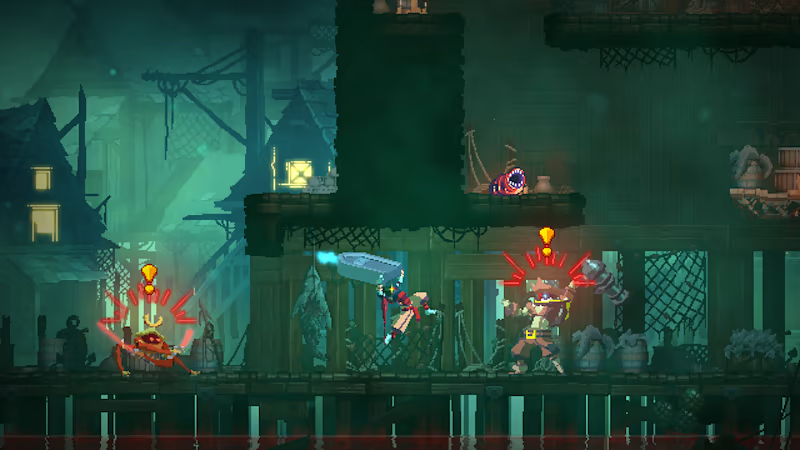
Dead Cells
The years leading up to 2018 had seen the roguelike craze reach a fever pitch, and by the time Dead Cells released, most of us thought the genre had completely jumped the shark. Turns out, we couldn’t have been more wrong. Dead Cells sprinkles in just enough tropes from “Metroidvania”-style games to offer a roguelike that manages to be fresh and fun. If you want a castle-crawling platformer with meaningful progression over time that nevertheless offers up gameplay in easily-digestible 10-20 minute chunks, look no further.
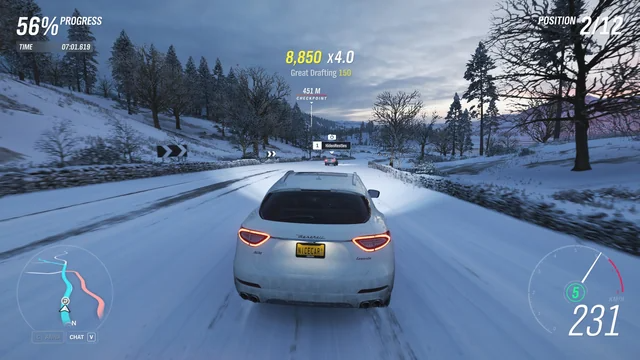
Forza Horizon 4
TheChirurgeon: For their 2018 update to the Horizon franchise, Playground games moved the festival to Britain. And while at first that seems like a bit less exciting than cruising the Australian outback in 3 or the Mexican countryside in 4, there’s a lot to love about touring the British countryside in the vehicle of your choice, including weather that varied with the seasons. It’s a solid game you’ll find plenty of people out there calling it the best of the Horizon series.
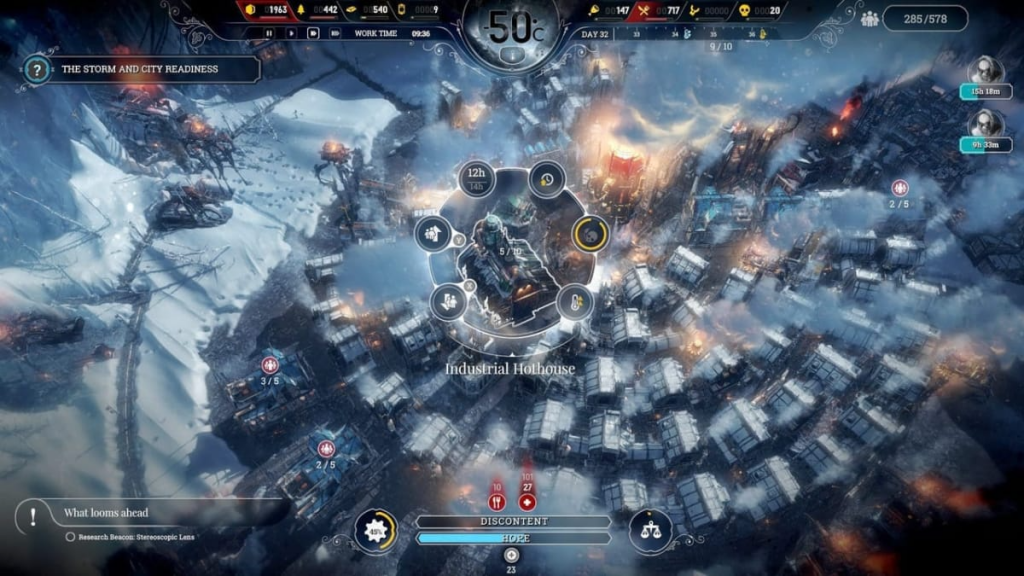
Frostpunk
Frostpunk is an incredibly interesting game, combining the simulation aspects of a city-building game with the tension of a survival horror game. In Frostpunk you take the role of the leader of civilization trying to survive a global volcanic winter, managing dwindling resources, scarcity, and hunger in order to survive the brutal cold. It’s a game about making hard choices and ultimately the biggest choice of all in the game is how much of your humanity you’ll discard in the name of survival.

Celeste
TheChirurgeon: 2018’s Celeste is one of the best platformers of the modern era, an incredibly tight platformer with fantastic mechanics that just feels great to play. It’s a difficult game but one that never feels unfair, giving you all the tools you need to succeed and breaking the game down into discrete, puzzle-like rooms. It’s almost impossible to talk about this game without gushing – from the way it changes its main character’s hair color to signify you’ve used your air dash to the addition of “Coyote Time” as a mechanic to let a player jump after running off a ledge, it just does so many wonderful little things mechanically that developers will be following the game’s lead for years to come.

Fear & Hunger
TheChirurgeon: If there’s a spiritual successor to 2005’s Pathologic, it’s 2018’s Fear & Hunger. A survival horror RPG dungeon crawler that’s philosophically a soulslike more than mechanically, Fear & Hunger is a dark, violent, and at times problematic game (you’re going to see a lot of dicks), that’s more than a little NSFW in parts and is just brutally difficult. The game’s biggest draw however is its deep and mysterious lore which will immediately remind players of Berserk or Bloodborne and has spawned a community desperate to uncover the game’s secrets.
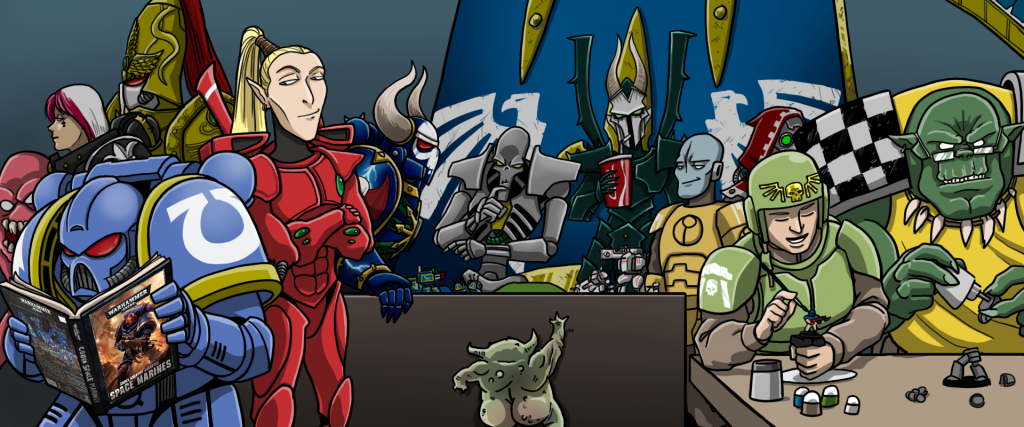
Goonhammer
Last, but certainly not least, 2018 saw the addition to the internet of a site you may have heard of: Goonhammer. It’s been a long ride from there to here, to be sure. What started as a half-assed repository of battle reports and army showcases for refugees from the Something Awful forums united in the (somewhat prescient, as it turned out) concern that Lowtax’s next meltdown could well be his last has turned into a site offering game analysis and meta commentary, guides on how to build, paint, and play just about any tabletop game you might care for, and, apparently, one-off bits about which years are better than which other years.
If you asked any of us back when we started this thing where we’d be in five years, we’d have probably told you to go to hell, and that we were immortal beings of pure energy who would outlive all of you. And honestly? Looks like we were right.
Why It Was the Best Year in Gaming
TheChirurgeon: The invention of Goonhammer obviously makes this the strongest year in gaming.
But aside from all that, 2018 was just a great year for games. Sony’s God of War reinvented the franchise for the modern era and really demonstrated how a franchise can grow up thematically. Red Dead Redemption 2 gave us the most compelling western of the decade in any medium. Smash Bros. Ultimate is the definitive version of one of gaming’s best fighting games. Monster Hunter World is the series’ best outing, and part of why the series has become such a big deal. And you’ve got Return of the Obra Dinn, one of the greatest, most novel puzzle games ever made.
On the tabletop, Age of Sigmar second edition refined the game substantially, bringing it a level of respectability that was missing with some of the quirkier release rules of the game’s first edition and shaping it more into the game we know and love today. And while Kill Team was by no means the best version of that game (or even great), it did set an important precedent for the game moving forward by making it a distinct, standalone game from Warhammer 40,000 instead of just being a variant on 40k. The success of Kill Team 2018 paved the way for the complete redesign in 2021 which finally saw the game break out as its own thing. 2018 was generally a really great year for board games as well, with a number of stand-out titles which made this is one of the largest groups of board games we’ve put into any year.
This article is part of a larger series on the best year in gaming. For more years, click this link. Have any questions or feedback? Drop us a note in the comments below or email us at contact@goonhammer.com.
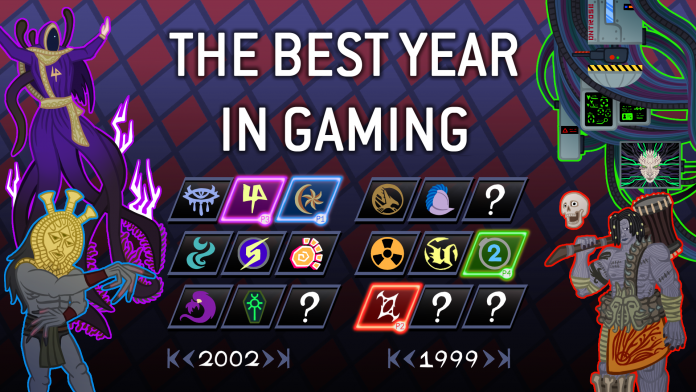


You must be logged in to post a comment.